Google Adsense—>

Training for a Dog with Separation Anxiety
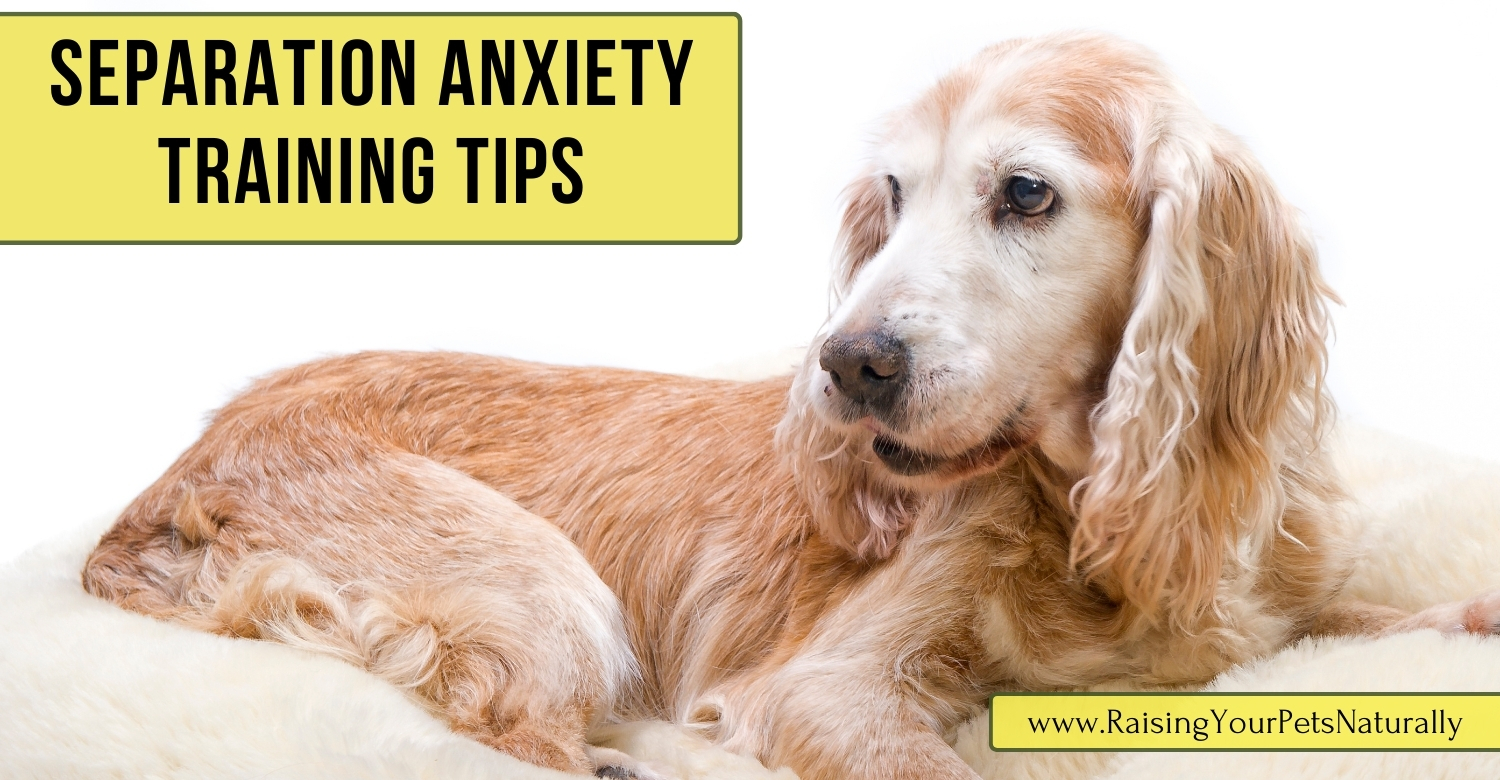
Separation anxiety in dogs is a serious condition that can cause severe distress, terror, and panic when they are left alone. It’s crucial to recognize that this isn’t just about boredom or lack of exercise; it’s a deep-rooted fear of being apart from their humans. According to the American Veterinary Medical Association, separation anxiety affects 20 percent to 40 percent of dogs referred to animal behavior practices in North America.
In this blog post, I’m diving into the initial stages of my treatment of separation anxiety in dogs protocol. I’ll start by giving you the first steps in the treatment plan, such as breaking the cycle of anxiety and creating a cozy confinement area. These are the first steps in treating your dog’s separation anxiety. Remember, every dog is different, so the process of treating your dog’s separation anxiety may vary. If you want to jump right into the entire program, check out my book, Please Stay: Help for a Dog with Separation Anxiety, on Amazon or Etsy. Let’s get started.
Identifying Separation Anxiety
The signs of separation anxiety can be different from dog to dog, but some common behaviors can include some or all: excessive barking, howling, pacing, drooling, eliminating indoors, destructive behaviors, self-mutilation, and attempts to escape.
There are certain factors and personality traits that can put a dog at higher risk of developing separation anxiety. Dogs with clingy personalities, traumatic experiences with departures, a lack of socialization or prevention, changes in routine, new additions to the family (pets or babies), and exposure to traumatic events like thunderstorms or earthquakes can increase a dog’s risk.
Unfortunately, I’ve been there myself. My golden retriever, Theo, was found as a stray puppy along with his brothers. Despite all I did, he ended up developing separation anxiety and a fear of storms following a traumatic experience during a thunderstorm. While I managed to ease his separation anxiety during off-season, the arrival of spring and summer storms always brought it back.
Onset of separation anxiety typically occurs under the age of two, though it can develop in older dogs due to cognitive or medical issues. These could include hypothyroid disease, metabolic disease, sensory impairments (like deafness or blindness), or arthritis. Once again, I’m faced with some senior separation anxiety with my now 14.5 year old Cavalier, Dexter.
If you’ve identified that your dog is dealing with separation anxiety, it’s absolutely crucial to take action to ease their distress. Dogs with separation anxiety can experience full-blown panic attacks and extreme terror when you’re away. Allowing them to suffer is simply not an option.
Treating separation anxiety isn’t about correcting your dog’s behavior; it’s about teaching your dog new emotions when they are left alone. Remember, they are not being bad; they are in a panic. The training plan is to help them feel relaxed, safe, and even happy when you head out the door.
But I’m not going to lie. It’s not usually a quick fix. In fact, it’s often a challenging journey that requires patience and practice sessions. That’s why I strongly recommend teaming up with a dog behavior professional, especially in the beginning stages. With their help and encouragement, you’ll have the tools you need to help your dog feel more relaxed when you are gone.
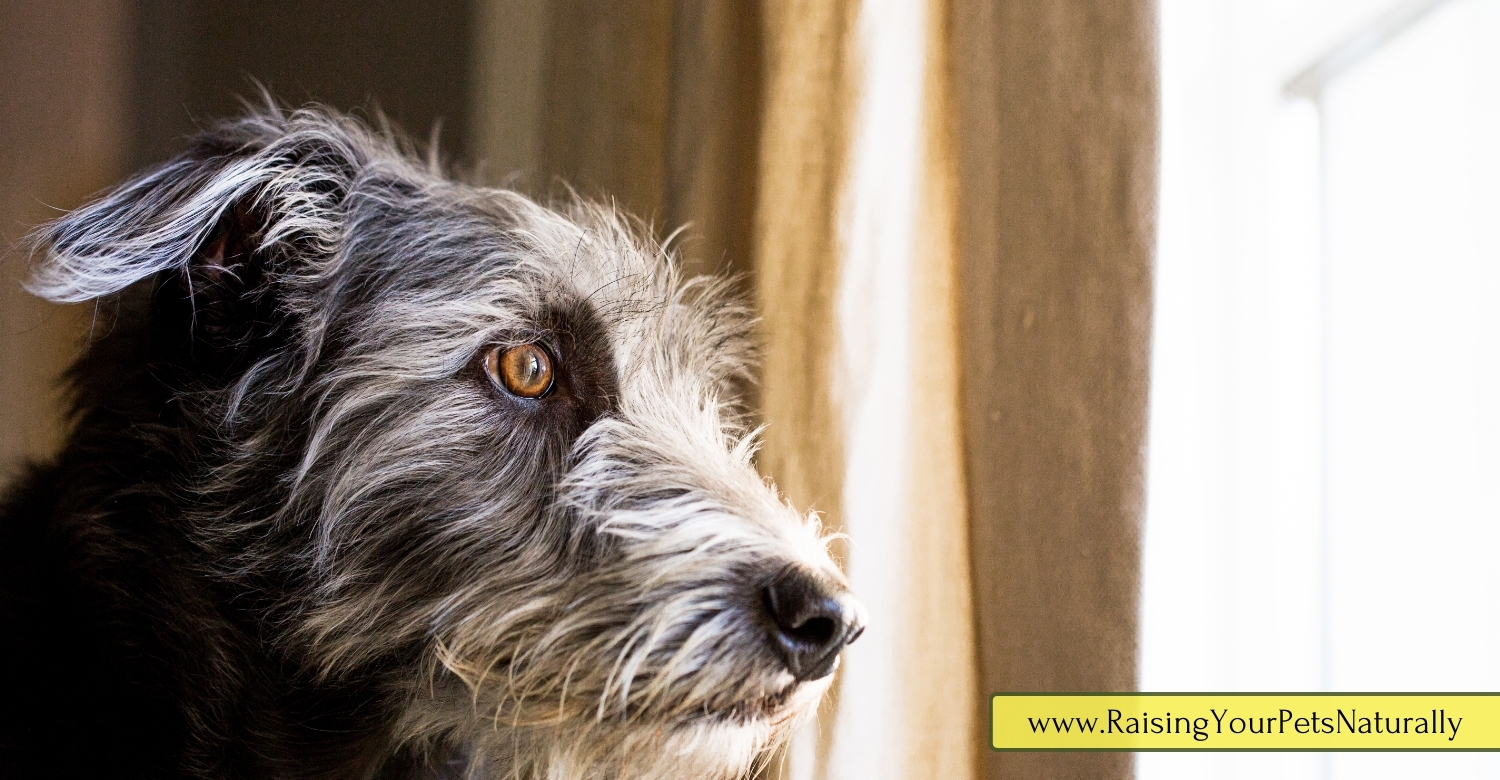
Breaking the Cycle of Anxiety: Step One in Treating Dog Separation Anxiety
This first step in treating a dog’s separation anxiety is crucial and one of the hardest steps for some people. We have to ensure our dog is not left alone. I know, I know. But hang in there. I have some tips to help you get through this step. It’s a temporary training phase.
Reviewing Schedules: Round up the family and get everyone’s schedules on the table. It’s time for a brainstorming and rescheduling session to figure out how to ensure someone’s with your dog at all times during this phase. You might need to get creative, tweak work hours, leave a bit earlier or later, etc. to fill in the gaps.
Outside Support: After the initial family schedule, you may need to look into a larger network of friends, family, and professionals. Consider options like pet sitters, doggy daycare, or even enlisting the help of college students, especially those studying anything animal related. Don’t overlook your neighbors or your kids’ friends’ families either. There are a lot of dog lovers out there.
Don’t Be Shy: It’s important to prioritize your dog’s well-being. Explain the situation and how tough it is, and don’t be afraid to offer something in return for a helping hand. Whether it’s trading favors or covering costs, your pup’s happiness is worth every effort. Remember, your dog is counting on you to be their advocate through this tough time.
Natural Remedies for Treating Dog Separation Anxiety
Let’s talk about over-the-counter (OTC) remedies for your dog’s anxiety. Just because something is natural doesn’t mean it’s always safe. If you’re considering trying a natural remedy or supplement for your dog’s separation anxiety, I can’t stress enough how important it is to chat with your dog’s holistic veterinarian first. They can guide you on which ones play well with any medications your dog may already be on or any health issues your dog may have. They can also help with determining a proper dose for your dog and even give you a safe range you can use.
Here are some options that may help with your dog’s separation anxiety:.
- Shen Calmer
- Botanical Animal – Independence
- Botanical Animal -Panic Attack
- Homeopet Anxiety Relief
- RX Vitamins – Nutri-Calm
- Valerian Root
- Calcarea phosphorica

Additional Calming Aids:
Anything that can bring a little extra Zen into your dog’s daily routine is a win. The success of your dog’s treatment is about them feeling stress-free and relaxed, so here are some additional things you can incorporate into your dog’s life.
- Calming Music: Calming music and natural sounds can help reduce stress and promote relaxation in dogs. Specifically designed options like Through a Dog’s Ear, calming music, or even white noise create a calming environment that soothes anxious dogs and encourages relaxation.
- Recorded House Noise: Playing recordings of household sounds while you’re away can help ease separation anxiety by providing familiarity and comfort to your dog.
- Calming Pheromones: Diffusers or sprays mimic natural calming pheromones, creating a sense of safety and relaxation.
- Thunder Shirt: By applying gentle pressure, this snug-fitting jacket can help alleviate dog anxiety.
- Your Shirt: Your scent on clothing can offer reassurance to your dog, easing separation anxiety when you’re away.
- Ear Muffs for Dogs: Plugs (especially handy for noise phobias): Dog ear muffs are designed for noise reduction to help buffer out loud noises such as thunderstorms or fireworks. These are particularly helpful if your dog’s separation anxiety was triggered by a noise phobia.
- Acupuncture: This holistic therapy stimulates relaxation and releases endorphins, helping to reduce stress and anxiety in dogs.
- Massage: A gentle massage promotes relaxation, eases tension, and boosts well-being in dogs, offering a natural way to relieve stress.
Stay Positive: The Power of Positive Reinforcement
When it comes to dogs with anxiety, positive dog training is a must. Obviously, I think it’s a must for all of our dogs, but when anxiety is at play, negativity can be 100x worse for their sensitive souls. It’s all about building your dog’s confidence. Dogs thrive when they feel loved and accepted, so make sure to shower them with positivity and affection. Our dogs with separation anxiety are super sensitive and hyper tuned in to our emotions. Keeping things upbeat and maintaining a happy vibe is key to their recovery.
Shen Disturbance: Traditional Chinese Medicine Theory
The ancient wisdom of Traditional Chinese Medicine sheds light on canine anxiety. According to this philosophy, dogs experiencing panic and stress may be dealing with a “Shen Disturbance,” which affects their inner calmness. By nurturing and calming the Shen, dogs can find relaxation and better cope with stress.

High-Quality Diet: You Are What You Eat!
You’ve probably heard the saying, you are what you eat, and it’s true! For us and our dogs. Having a proper diet and nutrients are essential for their physical, emotional and mental health. For dogs experiencing Shen disturbances, a cooling diet with ingredients like duck, rabbit, or cod can work wonders. These energetically cooling foods are believed to balance internal energies, promoting a sense of calm and relaxation. Alternatively, a neutral diet, such as beef or pork, may also help. Including foods such as sardines, sweet potatoes, chicken eggs, seaweed, kelp, apples, and spinach can help balance your dog’s nervous energy. If you’re really committed, consider preparing a customized, home-cooked or raw diet using wholesome, natural ingredients.
Step Two: Creating a Comfortable Confinement Area
Your confinement area does not have to be the end place you want to leave your dog. This area should be a space where they feel relaxed and content. Choose a spot in your home that’s cozy and allows for easy access during training sessions. Ideally, your dog should be able to see the entrance or exit points of your house, like the front door or garage.
Setting the Scene: Once you’ve chosen the perfect location, it’s time to Zen up the room to make it as inviting as possible. When you are practicing, you want the set-up just as you would if you were to really leave. Here’s a checklist to help you set the stage for success:
- Add various sleeping and resting items, such as dog beds, blankets, an open dog crate, or dog mats, to create a comfortable environment. Setting up multiple resting areas is ideal.
- Play background noise such as your calming music, white noise, or recordings of household activity.
- Use your pheromone plug-in or spray.
- Provide a basket of safe dog toys and favorite chews to keep your dog entertained.
- Close the blinds or curtains to minimize distractions from outside.
- Place a baby gate across the doorway of the confinement room to keep your dog inside without closing the door. This setup lets your dog see you and makes it easy for you to offer treats during training.
- Set up a video device to watch your dog in real time, as you will eventually be stepping out of sight.
- Create a designated spot inside the confinement area where you can spend time with your dog while doing other activities such as watching TV, working on the computer, or reading a book.
By making your confinement area a comfortable space for your dog, you will help him relax, which helps training go smoothly.
For a complete guide on navigating your dog’s separation anxiety journey, don’t forget to pick up a copy of my book, Please Stay: Help for a Dog with Separation Anxiety. Filled with the full treatment plan and practical tips. In my book, you’ll learn how to tackle your dog’s separation anxiety.
Your questions or comments are welcome below.
Are you looking for even more ways to stay up to date with Raising Your Pets Naturally? Sign up for the newsletter for more tips and promotions. Don’t forget to be social and Like, Follow and Subscribe.
Facebook Twitter Pinterest Instagram YouTube
Treating separation anxiety in dogs.
 |

Google Adsense—>


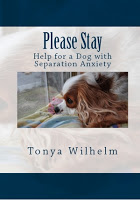

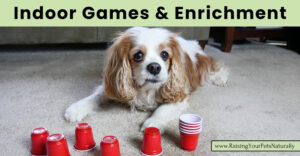
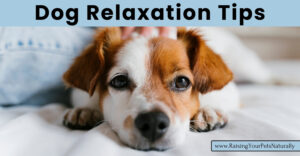
Oddly, my dog Miles does fine in the house when both Bob and I are out. The minute he can’t see us anymore he’s totally fine, but when he realizes we’re leaving, he’s absolutely inconsolable. He screams and cries and pulls on my clothes. It’s heartbreaking.
It sounds like Miles may be experiencing some distress related to your departure rather than being alone in the house. Have you tried any techniques to help ease his anxiety before you leave, such as gradually desensitizing him to your departure cues or providing him an enrichment toy when you leave. I do cover this in my book too. Since you are a Patreon member, feel free to send me an email for some personalize ideas.